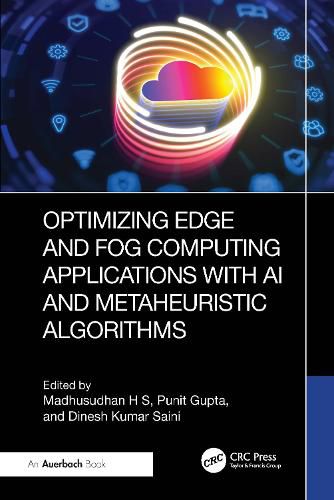Readings Newsletter
Become a Readings Member to make your shopping experience even easier.
Sign in or sign up for free!
You’re not far away from qualifying for FREE standard shipping within Australia
You’ve qualified for FREE standard shipping within Australia
The cart is loading…






Fog and edge computing are two paradigms that have emerged to address the challenges associated with processing and managing data in the era of the Internet of Things (IoT). Both models involve moving computation and data storage closer to the source of data generation, but they have subtle differences in their architectures and scopes. These differences are one of the subjects covered in Optimizing Edge and Fog Computing Applications with AI and Metaheuristic Algorithms. Other subjects covered in the book include:
Designing machine learning (ML) algorithms that are aware of the resource constraints at the edge and fog layers ensures efficient use of computational resources Resource-aware models using ML and deep leaning models that can adapt their complexity based on available resources and balancing the load, allowing for better scalability Implementing secure ML algorithms and models to prevent adversarial attacks and ensure data privacy Securing the communication channels between edge devices, fog nodes, and the cloud to protect model updates and inferences Kubernetes container orchestration for fog computing Federated learning that enables model training across multiple edge devices without the need to share raw data
The book discusses how resource optimization in fog and edge computing is crucial for achieving efficient and effective processing of data close to the source. It explains how both fog and edge computing aim to enhance system performance, reduce latency, and improve overall resource utilization. It examines the combination of intelligent algorithms, effective communication protocols, and dynamic management strategies required to adapt to changing conditions and workload demands. The book explains how security in fog and edge computing requires a combination of technological measures, advanced techniques, user awareness, and organizational policies to effectively protect data and systems from evolving security threats. Finally, it looks forward with coverage of ongoing research and development, which are essential for refining optimization techniques and ensuring the scalability and sustainability of fog and edge computing environments.
$9.00 standard shipping within Australia
FREE standard shipping within Australia for orders over $100.00
Express & International shipping calculated at checkout
Stock availability can be subject to change without notice. We recommend calling the shop or contacting our online team to check availability of low stock items. Please see our Shopping Online page for more details.
Fog and edge computing are two paradigms that have emerged to address the challenges associated with processing and managing data in the era of the Internet of Things (IoT). Both models involve moving computation and data storage closer to the source of data generation, but they have subtle differences in their architectures and scopes. These differences are one of the subjects covered in Optimizing Edge and Fog Computing Applications with AI and Metaheuristic Algorithms. Other subjects covered in the book include:
Designing machine learning (ML) algorithms that are aware of the resource constraints at the edge and fog layers ensures efficient use of computational resources Resource-aware models using ML and deep leaning models that can adapt their complexity based on available resources and balancing the load, allowing for better scalability Implementing secure ML algorithms and models to prevent adversarial attacks and ensure data privacy Securing the communication channels between edge devices, fog nodes, and the cloud to protect model updates and inferences Kubernetes container orchestration for fog computing Federated learning that enables model training across multiple edge devices without the need to share raw data
The book discusses how resource optimization in fog and edge computing is crucial for achieving efficient and effective processing of data close to the source. It explains how both fog and edge computing aim to enhance system performance, reduce latency, and improve overall resource utilization. It examines the combination of intelligent algorithms, effective communication protocols, and dynamic management strategies required to adapt to changing conditions and workload demands. The book explains how security in fog and edge computing requires a combination of technological measures, advanced techniques, user awareness, and organizational policies to effectively protect data and systems from evolving security threats. Finally, it looks forward with coverage of ongoing research and development, which are essential for refining optimization techniques and ensuring the scalability and sustainability of fog and edge computing environments.